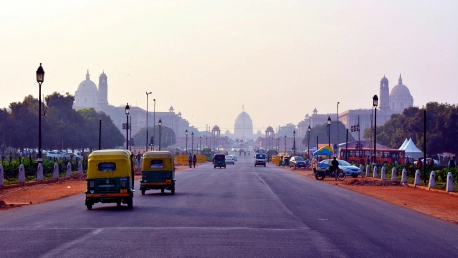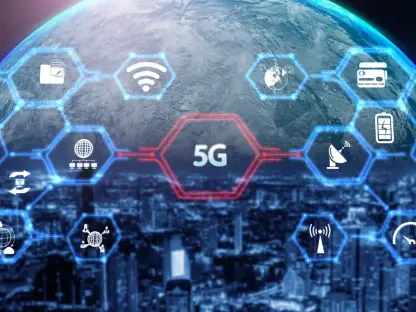At its 67th meeting in New Delhi, the Network Planning Group (NPG) made crucial progress in shaping the future of India’s infrastructure. Under the leadership of Rajeev Singh Thakur from DPIIT, the session put forth pivotal plans from the Ministry of Road Transport and Highways and the Ministry of Railways. These discussions focused on groundbreaking projects that are part of the PM GatiShakti initiative, aimed at fueling the nation’s socioeconomic progress through expansive infrastructure development. This initiative, reflecting the government’s commitment to building a cohesive infrastructure network, is poised to empower the country with enhanced connectivity and economic opportunities. The NPG’s role in facilitating these inter-ministerial efforts is a testament to the collaborative approach being undertaken to realize the ambitious goals of GatiShakti and ensure optimal utilization of resources.
Proposal for Multi Modal Logistics Park in Maharashtra
One of the marquee proposals discussed was the Multi Modal Logistics Park (MMLP) in Maharashtra, introduced by MoRTH. This MMLP is envisioned as a public-private venture, destined to radically transform how freight is moved, thereby enhancing economic activities across the region. As a nodal point for transport and logistics, the MMLP could usher in a new chapter of efficient and cohesive freight operation, promising to be a substantial boon to regional commerce and industry. This ambitious initiative aligns deftly with the government’s broader vision of reducing logistics costs and is seen as a critical step toward competitive efficiency within the global trade ecosystem.
Highway Expansion Projects for North India
The Ministry of Road Transport and Highways (MoRTH) has intensified efforts to enhance road infrastructure across North India by initiating several expansion initiatives, notably for the NH-334B and a new 4-lane elevated highway. These projects aim to alleviate the chronic congestion plaguing key routes, thereby propelling the region’s socioeconomic growth. The anticipated ease in traffic flow from these upgrades is expected to revolutionize transport in North India, making daily commutes more efficient for countless travelers and spurring economic activity by improving connectivity. Such comprehensive infrastructural improvements promise to usher in an era of heightened prosperity and advancement, reflecting the government’s commitment to addressing the persistent traffic and connectivity challenges faced by the region.
Rail Connectivity Endeavors in the Northeast
The Ministry of Railways brought to the table an ambitious project to fortify the connectivity in the Northeast via a proposed Broad Gauge line connecting Assam and Arunachal Pradesh. This project is not just a logistical endeavor but a symbol of the government’s pledge to ensure that the Northeastern states are seamlessly integrated into the economic fabric of the country. Enhanced rail connectivity stands to serve dual purposes – opening up new avenues for trade and fostering tourism – thus impacting the socioeconomic dynamics extensively. With a focus on fostering inclusivity, the rail project reiterates the commitment to bridge developmental gaps and knit the diverse regions of India into a unified economic entity.
Enhancing Rail Capacity: East Central Railway Project
At a recent meeting, the strategic importance of rail networks was underscored with proposals for the expansion of key railway sections falling under the East Central Railway’s jurisdiction. The focus centered on doubling the railway lines on the Narkatiaganj-Raxaul-Sitamarhi-Darbhanga route, as well as the Sitamarhi-Muzaffarpur section. These enhancements aim to address the growing need for effective rail transport for both freight and passengers. By improving these lines, an efficient alternative route will link Delhi and Guwahati, enhancing connectivity across the corridor. The expected outcomes include shorter travel times, reduced costs, and a boost to the regional economy, underpinning the NPG’s commitment to leveraging multi-modal transportation as an engine for national progress. These rail upgrades represent a vital investment in India’s transportation infrastructure, with broad socio-economic benefits.
Integrating Transport Modes for Socio-Economic Benefits
During the 67th NPG meeting, the significance of integrating diverse transport systems was the focal point, as it’s pivotal for socioeconomic advancement. It was widely agreed upon that the aim of infrastructure is not only to build physical constructs but to also lay down pathways for economic growth. The discussed projects are reflective of the government’s strategic vision for a connected and prosperous India. They are seen as keystones for the socioeconomic rejuvenation of the nation. By coordinating these infrastructure projects with the PM GatiShakti plan, the NPG demonstrated its commitment to developing a robust framework where infrastructure bolsters the nation’s economic goals. This commitment is essential for realizing India’s socioeconomic ambitions, and the NPG’s discussions highlighted the urgency of this integrative approach to transport and development.









